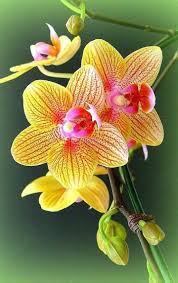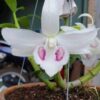# Success Stories from Growers of White Egg Orchids: Tips and Insights

## Table of Contents
1. **Introduction**
2. **Understanding White Egg Orchids**
– 2.1. Botanical Overview
– 2.2. Popularity and Demand
3. **Success Stories from Experienced Growers**
– 3.1. Case Study 1: The Eco-Conscious Grower
– 3.2. Case Study 2: The Innovative Florist
– 3.3. Case Study 3: The Community-Oriented Grower
4. **Best Practices in Cultivating White Egg Orchids**
– 4.1. Optimal Growing Conditions
– 4.2. Watering Techniques
– 4.3. Fertilization Strategies
– 4.4. Pest and Disease Management
5. **Marketing Strategies for Selling White Egg Orchids**
– 5.1. Building a Brand
– 5.2. Online Presence and E-commerce
– 5.3. Networking and Collaborations
6. **Sustainability and Environmental Impact**
– 6.1. Eco-Friendly Practices
– 6.2. Importance of Biodiversity
7. **Challenges Faced by Orchid Growers**
– 7.1. Common Problems and Solutions
– 7.2. Adapting to Market Trends
8. **Future Trends in the Orchid Industry**
– 8.1. Technology Integration
– 8.2. Increasing Consumer Awareness
9. **Conclusion**
10. **FAQs**
—
## 1. Introduction
White Egg Orchids (*Phalaenopsis amabilis*), with their striking beauty and unique characteristics, have captured the hearts of flower enthusiasts worldwide. As the demand for these exquisite flowers continues to grow, successful growers are stepping forward to share their experiences, insights, and best practices. This article aims to provide an in-depth look at the cultivation of White Egg Orchids, featuring success stories from experienced growers, practical tips, and strategies for thriving in the orchid industry.
## 2. Understanding White Egg Orchids
### 2.1. Botanical Overview
The White Egg Orchid is part of the Orchidaceae family and is native to Southeast Asia. It is renowned for its large, waxy white petals, which can add elegance to any floral arrangement. Key characteristics include:
– **Size**: The flowers can grow up to 5 inches in diameter, with long-lasting blooms.
– **Growth Habit**: These orchids thrive as epiphytes in their natural habitat, often growing on trees and requiring specific humidity and temperature conditions.
### 2.2. Popularity and Demand
Over the years, White Egg Orchids have gained immense popularity not just for ornamental purposes but also in the floral industry. Their beauty and adaptability make them a favorite among wedding planners, florists, and home decorators. This increasing demand presents opportunities for growers to tap into new markets and expand their businesses.
## 3. Success Stories from Experienced Growers
### 3.1. Case Study 1: The Eco-Conscious Grower
**Background**: Lisa Chen, an eco-conscious grower from California, specializes in organic White Egg Orchids. She started her journey after realizing the environmental impact of traditional orchid farming methods.
**Approach**:
– **Sustainable Practices**: Lisa employs sustainable practices, such as using organic fertilizers and natural pest control methods. She also focuses on conserving water and minimizing waste.
– **Education**: Lisa runs workshops to educate others about sustainable orchid cultivation, thereby promoting eco-friendly practices within the community.
**Outcome**: Lisa’s commitment to sustainability has earned her a loyal customer base that values eco-conscious products. Her orchids are in high demand at local farmers’ markets and online platforms.
### 3.2. Case Study 2: The Innovative Florist
**Background**: Mark Thompson, an innovative florist in New York, integrated White Egg Orchids into his floral designs, transforming his business.
**Approach**:
– **Creative Designs**: Mark specializes in unique floral arrangements that incorporate White Egg Orchids as focal points. He experiments with different styles and themes, appealing to diverse customer preferences.
– **Workshops and Events**: Mark hosts floral design workshops where participants learn to create their own arrangements using White Egg Orchids.
**Outcome**: Mark’s innovative approach has garnered significant attention, leading to collaborations with event planners and increased sales during wedding seasons. His brand has become synonymous with elegance and creativity.
### 3.3. Case Study 3: The Community-Oriented Grower
**Background**: Maria Lopez, a community-oriented grower in Texas, focuses on making White Egg Orchids accessible to her local community.
**Approach**:
– **Community Engagement**: Maria organizes community events where she sells her orchids and teaches local residents how to care for them. This has fostered a strong community bond.
– **Affordable Pricing**: By keeping prices affordable, Maria ensures that her orchids are accessible to everyone, encouraging more people to incorporate them into their homes.
**Outcome**: Maria’s dedication to her community has resulted in a thriving business, with many locals returning for repeat purchases and referrals. Her success highlights the importance of community engagement in business growth.
## 4. Best Practices in Cultivating White Egg Orchids
### 4.1. Optimal Growing Conditions
Creating the right environment is crucial for the successful growth of White Egg Orchids:
– **Light**: These orchids prefer bright, indirect sunlight. Growers should avoid direct sunlight, which can scorch the leaves.
– **Temperature**: Ideal temperatures range from 70°F to 85°F during the day and 60°F to 70°F at night.
– **Humidity**: Maintaining humidity levels between 50-70% is essential for healthy growth. Growers can use humidifiers or pebble trays to increase humidity.
### 4.2. Watering Techniques
Watering is a critical aspect of orchid care:
– **Frequency**: Water once every week or when the top inch of the growing medium feels dry. Overwatering can lead to root rot.
– **Method**: Use room temperature water, and ensure that the pot has proper drainage to prevent water accumulation.
### 4.3. Fertilization Strategies
Proper fertilization helps orchids thrive:
– **Type of Fertilizer**: Use a balanced, water-soluble fertilizer (20-20-20) every two weeks during the growing season. Reduce feeding to once a month during the dormant season.
– **Application**: Dilute the fertilizer to half-strength and apply it when watering.
### 4.4. Pest and Disease Management
Monitoring for pests and diseases is vital:
– **Common Pests**: Watch out for aphids, mealybugs, and spider mites. Regularly inspect plants and treat infestations promptly using insecticidal soap or neem oil.
– **Disease Prevention**: Ensure good air circulation around the plants to prevent fungal diseases. Remove any dead or yellowing leaves to promote healthy growth.
## 5. Marketing Strategies for Selling White Egg Orchids
### 5.1. Building a Brand
Establishing a strong brand is essential for standing out in the market:
– **Unique Selling Proposition**: Identify what makes your orchids special, whether it’s organic cultivation, unique varieties, or creative arrangements.
– **Brand Identity**: Create a logo and consistent branding elements that reflect your values and mission.
### 5.2. Online Presence and E-commerce
Having an online presence is crucial for reaching a wider audience:
– **Website**: Develop a professional website that showcases your orchids and offers e-commerce capabilities.
– **Social Media**: Use platforms like Instagram and Facebook to share beautiful images of your orchids, connect with customers, and promote special offers.
### 5.3. Networking and Collaborations
Building relationships with other businesses can enhance visibility:
– **Local Florists**: Partner with local florists to supply White Egg Orchids for events and arrangements.
– **Events**: Participate in trade shows, flower shows, and community events to showcase your orchids and connect with potential customers.
## 6. Sustainability and Environmental Impact
### 6.1. Eco-Friendly Practices
Many successful growers are adopting eco-friendly practices to reduce their environmental impact:
– **Organic Methods**: Growing orchids organically can improve soil health and reduce chemical runoff.
– **Recycling and Upcycling**: Use recycled materials for pots and packaging to minimize waste.
### 6.2. Importance of Biodiversity
Promoting biodiversity is crucial for the long-term sustainability of orchid cultivation:
– **Conservation Efforts**: Growers can contribute to conservation efforts by participating in programs that protect native orchid species and their habitats.
– **Diverse Varieties**: Cultivating a variety of orchids can help support local ecosystems and attract beneficial insects.
## 7. Challenges Faced by Orchid Growers
### 7.1. Common Problems and Solutions
Growers often face various challenges, including:
– **Pest Infestations**: Regular monitoring and prompt action are key to managing pests effectively.
– **Environmental Changes**: Sudden changes in temperature or humidity can stress orchids. Using climate control systems can help maintain a stable environment.
### 7.2. Adapting to Market Trends
Staying abreast of market trends is essential for success:
– **Consumer Preferences**: Understanding changing consumer preferences, such as the demand for eco-friendly products, allows growers to adapt their offerings accordingly.
– **Innovation**: Continuously innovating with new varieties and cultivation techniques can help growers stay competitive.
## 8. Future Trends in the Orchid Industry
### 8.1. Technology Integration
The orchid industry is embracing technology to enhance productivity:
– **Smart Growing Systems**: Automated systems for watering, fertilization, and climate
control can optimize growing conditions and reduce labor costs.
– **Data Analytics**: Utilizing data analytics to track plant health and growth patterns can inform better cultivation practices.
### 8.2. Increasing Consumer Awareness
As consumers become more aware of sustainability, growers can capitalize on this trend:
– **Educational Marketing**: Providing information about the benefits of sustainable orchid cultivation can attract environmentally conscious customers.
– **Transparency**: Being transparent about growing practices can build trust with consumers.
## 9. Conclusion
The journey of cultivating White Egg Orchids is filled with challenges and rewards. By learning from the experiences of successful growers, newcomers to the industry can gain valuable insights that will guide them toward success. As the demand for these exquisite flowers continues to grow, adopting best practices, innovative marketing strategies, and eco-friendly approaches will be key to thriving in this beautiful and rewarding industry.
## 10. FAQs
1. **What are White Egg Orchids?**
White Egg Orchids are a species of orchid known for their stunning white flowers and are popular in floral arrangements and gardening.
2. **How can I care for White Egg Orchids?**
Provide bright, indirect light, maintain humidity levels, and water appropriately while ensuring good drainage.
3. **What are the common pests that affect orchids?**
Common pests include aphids, mealybugs, and spider mites. Regular inspections and treatments can help manage infestations.
4. **How do I market my orchids effectively?**
Establish a strong brand, create an online presence, and network with local florists and event planners to increase visibility.
5. **Are there sustainable practices for orchid cultivation?**
Yes, using organic fertilizers, natural pest control methods, and recycling materials can contribute to sustainable orchid farming.
—
This comprehensive article covers various aspects of growing White Egg Orchids, from understanding their characteristics to sharing success stories and best practices from experienced growers. By following these insights, aspiring orchid cultivators can enhance their knowledge and improve their chances of success in this beautiful industry.

